Asus A8R-MVP: Mainstream Rocket
by Wesley Fink on November 23, 2005 1:15 AM EST- Posted in
- Motherboards
Asus A8R-MVP: Board Layout
Nonetheless, all the top Crossfire AMD features are there, such as dual x16 PCIe slots that support a single x16 video card or dual x8 Crossfire.
The basic layout of the A8R-MVP is typically Asus, meaning that the layout overall is very good. Cooling is passive - there are no active fans - which is also typical of Asus designs. You will notice that there is nothing on the board which would announce that this might be a serious overclocker, except perhaps for the large heatsink covering the power Mosfets. Even here, we see a 3-phase design instead of the robust 4-phase designs used on the ATI Reference boards.
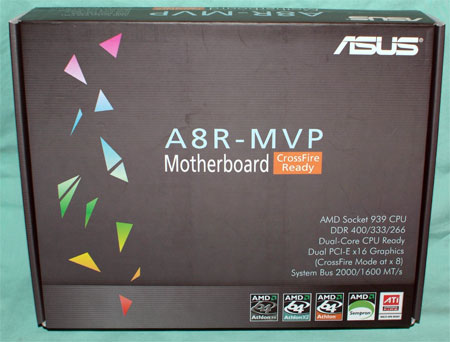
Nonetheless, all the top Crossfire AMD features are there, such as dual x16 PCIe slots that support a single x16 video card or dual x8 Crossfire.
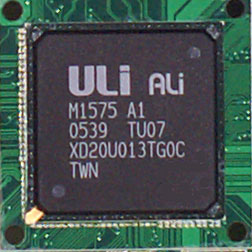
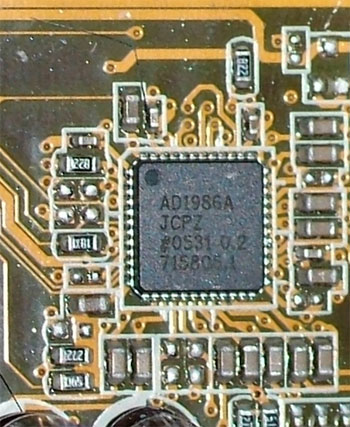

The basic layout of the A8R-MVP is typically Asus, meaning that the layout overall is very good. Cooling is passive - there are no active fans - which is also typical of Asus designs. You will notice that there is nothing on the board which would announce that this might be a serious overclocker, except perhaps for the large heatsink covering the power Mosfets. Even here, we see a 3-phase design instead of the robust 4-phase designs used on the ATI Reference boards.


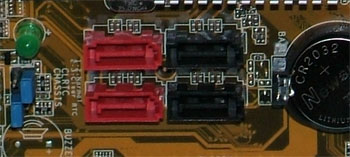





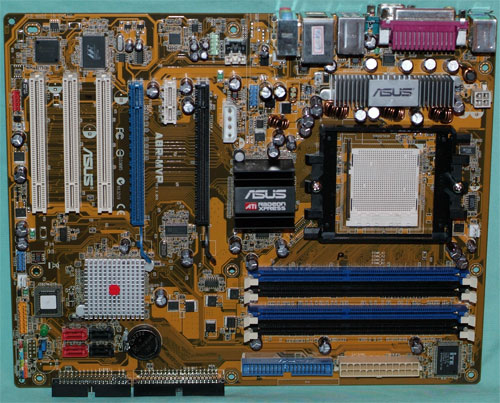








74 Comments
View All Comments
Avalon - Wednesday, November 23, 2005 - link
Wesley, just for giggles, can you set a RAM divider and drop your CPU multiplier down to 7x, and see how high the HTT can reach stably? That would be nice to see.n7 - Wednesday, November 23, 2005 - link
I may have just founds my next motherboard!As long as prices do come to the level of a mainstream mobo, this looks very good.
I have to admit, until the A8N32-SLI Deluxe, & now this, i was extremely unimpressed with all Asus A64 motherboards.
Now the last two i've seen from Asus look very good :)
fitten - Wednesday, November 23, 2005 - link
I see this a lot (particularly on AnandTech) and have yet to see any *real* benchmarks that show this change results in anything more than a 1% to 2% performance gain, which is typically within the statistical margin of error for the benchmarking performed by most review sites. Are there any definitive benchmarks (that are statistically significant) that show more of a gain than this?
Wesley Fink - Wednesday, November 23, 2005 - link
You have seen this a lot on AT and any site that specializes in performance and overclocking. Memtest86 is a standard test used in the memory industry to test performance. It shows a 5 to 10% increase in performance at 1T compared to 2T - depending on CPU speed and memory frequency. Similar increases are reported by SiSoft Sandra Unbuffered and Everest, which also measure memory bandwidth.Memory is only one small part of total performance, and in gaming 1T only increases framerate 1% to 5% depending on the game and equipment used for testing. You are correct that this won't be noticed by most end users, but if you are aiming for absolute top performance in gaming or competetive benchmarking this does matter. We covered this pretty thoroughly with test results in a memory piece several months ago.
Live - Wednesday, November 23, 2005 - link
Very nice review and a nice find!I would have loved to have seen the ASRock 939Dual-SATA2 included in the benchmarks. Why? It is just as close in price as many other boards and frankly cater to sort of the same user group. This would also show what can be had in the different price groups.
I also find this quote a bit strange
I would think that ASUS having low expectations on this board and they being genuinely surprised would indicate that there internal testing does not show the same results as your sample does. Thus indicating it is indeed an over performing sample. This possibility seems just as likely anyway. What I am missing?
Wesley Fink - Wednesday, November 23, 2005 - link
Asus does extensive overclocking tests on their top-line boards aimed at that market. They generally know how they will perform in overclocking. They do more modest tests on mainstream boards. It is my opinion it never occured to Asus that the A8R-MVP might be a monster overclocker until I reported my results back to them. Once I did, Asus was very helpful in adding additional options to BIOS that I suggested would be welcomed by overclockers. Some components limit what Asus can add, but they had added additional options that could be added.We do have a very good working relationship with Asus. As an example the first Asus A8N-SLI Premium boards (without the paddle) were supposed to be top-end. Our pre-production samples turned out to be very poor overclockers due to the automatic switches and Asus decided to rework the board rather than bring a mediocre board to market. The revised Premium came about 8 weeks later and we confirmed it was an oxcellent overclocker and a good performer. That is the board Asus brought to market.
Live - Wednesday, November 23, 2005 - link
Thanks for the clarification. I think I got what I was missing. In that light this board does look like a true gem in disguise.nvidia4ever - Wednesday, November 23, 2005 - link
Is there a reason why the X1800XT was not tested? By chance, did you test the board with a Opteron 148? I could see this combination being great together considering how well both overclock. That would be a killer package at $350. When will the board be available?Wesley Fink - Wednesday, November 23, 2005 - link
The motherboard lab does not a X1800XT for benchmarking, a fact we point out to ATI whenever we get the opportunity. ATI is still having X1800XT supply problems and they have promised we will have cards for testing as soon as they are available for sampling.We have to wonder aloud if we have had so much trouble getting X1800XT for testing, what chance does a "mere mortal" have to buy an X1800XT. We can only say we're glad ATI does not appear to have motherboard chipset supply issues, because the video card situation is horrendous.
nvidia4ever - Wednesday, November 23, 2005 - link
There are several x1800xt cards available here - http://www.newegg.com/Product/ProductList.asp?Manu...">x1800xt cards Is ATI just screwing around with you guys? Can this board run nvidia sli cards?